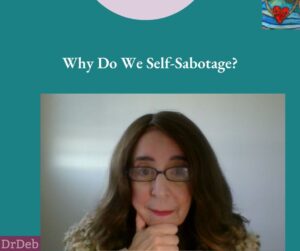Believe it or not, every attempt at self-sabotage is actually meant to help us.
That’s because the behaviors, feelings, and attitudes that hijack us are our protectors within.
Protectors started helping us when we were young — and they haven’t stopped.
They can’t stop, actually. That’s because they come from pathways in our brain that get more and more entrenched the more we use them.
Let’s take an example.
As a little kid, Harry was full of enthusiasm. He thought he could do anything in the world. One day he could imagine being a fireman and saving lives. Another day, he was a conductor on a train, things little boys enjoy daydreaming about.
His parents – because of their own protective parts – didn’t like this daydreaming. “Just do you schoolwork, brush your teeth and go to bed” they would say.
Over years of this, the idea got into him that dreaming would be smashed down, so it’s better to not dream at all.
When he was in his 40’s after working for years at a dull, grinding job, he had the opportunity for a promotion. You’d think a person in that situation would be excited about it, right? But it looked to him like a fairy tale and he stopped believing in fairy tales at about the age of 8.
He started a path to depression and after not showing up consistently at work, the promotion was retracted and he was put on notice of being terminated.
How did this happen to Harry? If he were to focus inside on the ideas of not showing up and the feeling of failure even before it started and he were to simply ask his protectors, “Why are you doing this to me?” they’d have a ready answer. . .
. . . “Clearly, it’s to save you from disappointment when the promotion turns out to be an awful step for you.”
Here’s another example.
Lindsay crawled out of her crib at age 3 and padded into her mother’s room. She pushed her little hands onto the bed only to discover her mother motionless. She started to cry and nothing happened.
Lindsay learned that relationships don’t keep. The authorities discovered what happened and placed Lindsay in foster care, or many foster homes, one after another.
Would it surprise you to learn that as Lindsay grew up, she “sabotaged” every relationship she got into?
But you see, her protective parts were trying to help! When she focused inside herself and asked why this kept happening, the answer she got was clear: “If you don’t get into a relationship, then no one can take it away.”
So the big question is: What do you do about this?
The solution involves 3 steps:
1. A therapist helps Harry and Lindsay meet their protectors, talk to them, get to know them, and begin to offer the possibility to them that things can be different.
2. When the protectors – finally – are ready to let down their guard, they may let the therapist help Harry and Lindsay recall their exiled memories of pain, disappointment, and sorrow.
3. These memories will look like themselves at the various ages when they were severely hurt, and these “inner children” can finally, finally get a chance to unburden themselves of what happened to them to a listening ear, that is, to Harry and Lindsay themselves.
Not only that, their inner children can have the pleasure of imagining how wonderful things could be if they got to do things the way they would have wanted things to go.
So, for example, Harry’s little boy can recreate the scenes with his parents and have them encourage him instead of discourage him. He can feel the excitement, pleasure, and anticipation of being that fireman or train conductor.
Similarly, Lindsay can make up in her imagination a loving mother who was actually there for her.
Why This Works
You’d think this is ridiculous until you study the brain.
It turns out that our brains don’t care whether something is real or imagined for it to have an impact neurologically.
That is why, as a side note, performance anxiety causes the very problems people are afraid of, and why athletes whose coaches give them strong pep talks before a game have a higher percentage of winning than those who didn’t.
Thoughts, attitude, and the imagination are powerful.
And that is how Harry and Lindsay will heal.
That is basically what we do, whether it is in the Coaching program or the intensive Immersion Experience: We help you harness your own imagination to heal your protectors and the inner children they’re protecting.
When the healing is complete, there is no more self-sabotage. The will be self-forgiveness for the loss of years not reaching for their dreams. But now, Harry, Lindsay, and you will keep reaching up.
In my 4-month Coaching Program healing from self-sabotage is one of the things I help couples in long-term marriages with.
They’ve lost that connection with themselves, especially with their dreams, so of course they’ve lost it with each other. I help them learn why and what to do to get it back.
We also work on healing other protectors such as those that think anger is a solution, or creating emotional distance will protect them, or using distractions such as overwork and addictions.
In the Coaching program you get the same material to learn as the people in the Immersion Experience.
Comment below for links to learn more.


Excellent.
Valerie, did you see my emails? I haven’t heard back from you. I tried 2 of my own addresses.